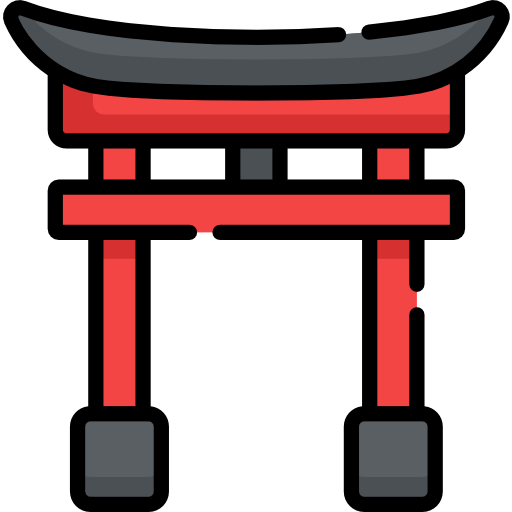Have you ever spotted a salamander in a Japanese mountain stream and wondered what locals call it? Or perhaps you’re fascinated by Japan’s unique turtle species but don’t know their Japanese names? Japan’s diverse ecosystem harbors a remarkable variety of Japanese reptiles and amphibians, each with distinct names that reflect the country’s rich linguistic heritage and deep connection to nature.
As an archipelago with varied climates ranging from snowy mountains to subtropical islands, Japan provides diverse habitats for countless reptile and amphibian species. Many of these creatures play significant roles in Japanese folklore, art, and even modern pop culture.
In this comprehensive guide, we’ll explore 30 fascinating Japanese reptiles and amphibians, complete with their Japanese names, pronunciation guides, cultural significance, and practical usage examples. Whether you’re planning a wildlife expedition to Japan, studying the language, or simply curious about these fascinating creatures, this guide will enhance your understanding and appreciation of Japan’s herpetological diversity.
Want to start learning Japanese right away?
Access our Free Study Guides with grammar explanations, vocabulary lists, and study tips. All at no cost.
Why Learning Japanese Reptile and Amphibian Names Is Valuable
Japan’s relationship with its native wildlife stretches back thousands of years. From ancient mythology to contemporary conservation efforts, Japanese reptiles and amphibians have shaped the cultural landscape in numerous ways. Learning these terms will help you:
- Identify species accurately during nature walks or visits to Japanese zoos
- Understand references in Japanese literature, folklore, and anime
- Engage in conversations about wildlife conservation with locals
- Expand your Japanese vocabulary with specialized, yet practical terminology
As we explore each species, you’ll discover not just their names but also how these terms are used in everyday Japanese contexts—providing you with both linguistic knowledge and cultural insights.
Common Turtles and Tortoises in Japanese
ニホンイシガメ (Nihon-ishigame) – Japanese Pond Turtle
This freshwater turtle is native to Japan and holds cultural significance as a symbol of longevity. Its name literally translates to “Japanese stone turtle,” referencing its habit of basking on rocks in rivers and ponds.
Example sentence: 「ニホンイシガメは絶滅危惧種に指定されています。」 Nihon-ishigame wa zetsumetsu kikyu-shu ni shitei sareteimasu. “The Japanese pond turtle is designated as an endangered species.”
クサガメ (Kusagame) – Chinese Pond Turtle
Despite its name suggesting Chinese origins, this turtle has established itself throughout Japan. The name クサガメ literally means “grass turtle,” referring to its preferred habitats with abundant vegetation.
Example sentence: 「クサガメは日本の田んぼでよく見かけます。」 Kusagame wa Nihon no tanbo de yoku mikakemasu. “Chinese pond turtles are commonly spotted in Japanese rice paddies.”
アオウミガメ (Aoumi-game) – Green Sea Turtle
These magnificent marine reptiles migrate to Japan’s southern shores. The name combines アオ (ao, “blue/green”), ウミ (umi, “sea”), and カメ (kame, “turtle”), though interestingly, it’s named after its greenish fat rather than its shell color.
Example sentence: 「アオウミガメは小笠原諸島で産卵することがあります。」 Aoumi-game wa Ogasawara-shotō de sanran suru koto ga arimasu. “Green sea turtles sometimes lay eggs in the Ogasawara Islands.”
タイマイ (Taimai) – Hawksbill Turtle
With its beautifully patterned shell, the hawksbill turtle has historically been used in Japanese craftsmanship. Its Japanese name タイマイ is an ancient term with unclear etymology, demonstrating how deeply these creatures are embedded in Japanese culture.
Example sentence: 「タイマイの甲羅は伝統的な工芸品に使われていました。」 Taimai no kōra wa dentōteki na kōgeihin ni tsukawareteimashita. “Hawksbill turtle shells were used in traditional crafts.”

Snakes of Japan in Japanese
ニホンマムシ (Nihon-mamushi) – Japanese Pit Viper
One of Japan’s most feared venomous snakes, the Japanese pit viper is found throughout the main islands. The term マムシ (mamushi) has ancient origins in Japanese and is used in various idioms and expressions.
Example sentence: 「山歩きの際はニホンマムシに注意してください。」 Yamaaruki no sai wa Nihon-mamushi ni chūi shite kudasai. “Please be careful of Japanese pit vipers when hiking in the mountains.”
ハブ (Habu) – Habu Pit Viper
Endemic to Okinawa and the Amami Islands, the habu has a fearsome reputation. This venomous snake has inspired numerous cultural references, including the famous ハブ酒 (habu-zake), a rice liquor with a preserved snake inside.
Example sentence: 「沖縄ではハブに対する注意喚起がよく行われています。」 Okinawa dewa habu ni taisuru chūi kanki ga yoku okonawareteimasu. “In Okinawa, warnings about habu snakes are frequently issued.”
シマヘビ (Shimahebi) – Japanese Striped Snake
This non-venomous snake is one of the most commonly encountered Japanese reptiles. Its name シマヘビ combines シマ (shima, “stripe”) and ヘビ (hebi, “snake”), referring to its distinctive patterning.
Example sentence: 「シマヘビは無毒で、むしろ益虫を食べてくれる益獣です。」 Shimahebi wa mudoku de, mushiro ekichū o tabete kureru ekijū desu. “The Japanese striped snake is non-venomous and actually a beneficial animal that eats pest insects.”
アオダイショウ (Aodaishō) – Japanese Rat Snake
Japan’s largest snake, the アオダイショウ, can grow quite large and is an excellent climber. The name combines アオ (ao, “blue/green”) and ダイショウ (daishō, “large and small”), possibly referring to its variable size.
Example sentence: 「アオダイショウは家屋に入ることもありますが、人間には危険ではありません。」 Aodaishō wa kaoku ni hairu koto mo arimasu ga, ningen ni wa kiken dewa arimasen. “Japanese rat snakes sometimes enter houses, but they are not dangerous to humans.”
Lizards of Japan in Japanese
ニホントカゲ (Nihon-tokage) – Japanese Five-Lined Skink
This common lizard is recognized by its shiny body and five yellow stripes. The term トカゲ (tokage) is the general Japanese word for lizard, while ニホン (Nihon) indicates its native status.
Example sentence: 「ニホントカゲの子どもは尾が青いことで知られています。」 Nihon-tokage no kodomo wa o ga aoi koto de shirarete imasu. “Young Japanese five-lined skinks are known for having blue tails.”
ニホンカナヘビ (Nihon-kanahebi) – Japanese Grass Lizard
Found in grassy areas throughout Japan, this small lizard is one of the most frequently encountered Japanese reptiles. Its name カナヘビ has uncertain origins but has been used in Japanese for centuries.
Example sentence: 「ニホンカナヘビは危険を感じると尾を切り離して逃げます。」 Nihon-kanahebi wa kiken o kanjiru to o o kirisanashite nigemasu. “When the Japanese grass lizard feels threatened, it detaches its tail and escapes.”
ニホンヤモリ (Nihon-yamori) – Japanese House Gecko
This small nocturnal lizard is often found in and around Japanese homes. Traditionally believed to bring good fortune, the ヤモリ (yamori) is considered a welcome guest in many households.
Example sentence: 「ニホンヤモリは家の中の害虫を食べてくれる共生者です。」 Nihon-yamori wa ie no naka no gaichū o tabete kureru kyōseisha desu. “The Japanese house gecko is a symbiotic creature that eats household pests.”
Salamanders and Newts in Japanese
オオサンショウウオ (Ōsanshōuo) – Japanese Giant Salamander
One of the world’s largest amphibians, the Japanese giant salamander is a protected species and national natural monument. Its name combines オオ (ō, “big”) and サンショウウオ (sanshōuo, “salamander,” literally “pepper fish” due to the pepper-like spots on some species).
Example sentence: 「オオサンショウウオは日本の特別天然記念物に指定されています。」 Ōsanshōuo wa Nihon no tokubetsu tennen kinenbutsu ni shitei sareteimasu. “The Japanese giant salamander is designated as a special natural monument of Japan.”
ハコネサンショウウオ (Hakone-sanshōuo) – Hakone Salamander
Named after the Hakone region where it was first discovered, this small salamander is endemic to certain Japanese mountain ranges. It represents one of many locally adapted salamander species found throughout Japan.
Example sentence: 「ハコネサンショウウオは箱根山地の清流にのみ生息しています。」 Hakone-sanshōuo wa Hakone sanchi no seiryū ni nomi seisoku shite imasu. “The Hakone salamander lives only in the clear streams of the Hakone mountains.”
アカハライモリ (Akahara-imori) – Japanese Fire-Bellied Newt
This striking newt gets its name from its bright red belly, which serves as a warning to predators. The name combines アカハラ (akahara, “red belly”) and イモリ (imori, “newt”).
Example sentence: 「アカハライモリは毒を持っていますが、触らなければ安全です。」 Akahara-imori wa doku o motte imasu ga, sawaranakereba anzen desu. “The Japanese fire-bellied newt is poisonous, but it’s safe if you don’t touch it.”
Frogs and Toads in Japanese
ニホンアマガエル (Nihon-amagaeru) – Japanese Tree Frog
This small, bright green frog is one of the most familiar Japanese amphibians. Its name アマガエル (amagaeru) combines アマ (ama, “rain”) and カエル (kaeru, “frog”), reflecting the belief that their calls predict rainfall.
Example sentence: 「ニホンアマガエルの鳴き声は初夏の風物詩です。」 Nihon-amagaeru no nakigoe wa shoka no fūbutsushi desu. “The calls of Japanese tree frogs are a characteristic feature of early summer.”
モリアオガエル (Moriao-gaeru) – Forest Green Tree Frog
Famous for its unique reproduction strategy of creating foam nests in trees above water, this frog has captured the Japanese imagination. Its name combines モリ (mori, “forest”), アオ (ao, “green”), and カエル (kaeru, “frog”).
Example sentence: 「モリアオガエルは木の上に泡の巣を作ることで知られています。」 Moriao-gaeru wa ki no ue ni awa no su o tsukuru koto de shirarete imasu. “The forest green tree frog is known for making foam nests in trees.”
ニホンヒキガエル (Nihon-hikigaeru) – Japanese Toad
This common toad is found throughout Japan and has featured in folklore and art for centuries. ヒキガエル (hikigaeru) is the general term for toads in Japanese, with ヒキ (hiki) possibly referring to the warty appearance.
Example sentence: 「ニホンヒキガエルは害虫を多く食べる農家の味方です。」 Nihon-hikigaeru wa gaichū o ōku taberu nōka no mikata desu. “The Japanese toad is an ally of farmers as it eats many pest insects.”

Rare and Endemic Japanese Reptiles and Amphibians
リュウキュウヤマガメ (Ryūkyū-yamagame) – Ryukyu Black-Breasted Leaf Turtle
Endemic to the Ryukyu Islands, this rare turtle is critically endangered. Its name indicates its geographic origin (リュウキュウ, Ryūkyū) and habitat preference (ヤマ, yama, “mountain”).
Example sentence: 「リュウキュウヤマガメは沖縄の固有種で、絶滅の危機に瀕しています。」 Ryūkyū-yamagame wa Okinawa no kotōshu de, zetsumetsu no kiki ni hinshite imasu. “The Ryukyu black-breasted leaf turtle is endemic to Okinawa and faces extinction.”
イシカワガエル (Ishikawa-gaeru) – Ishikawa Frog
Named after the biologist who first described it, this colorful frog is found only in the Ryukyu Islands. It represents the remarkable biodiversity of Japan’s southern island chains.
Example sentence: 「イシカワガエルの鮮やかな色彩は見る者を魅了します。」 Ishikawa-gaeru no azayaka na shikisai wa miru mono o miryō shimasu. “The vivid coloration of the Ishikawa frog captivates those who see it.”
キシノウエトカゲ (Kishinoue-tokage) – Kishinoue’s Giant Skink
This large skink is named after Japanese zoologist Kamakichi Kishinouye and is endemic to Japan’s southern islands. It faces serious conservation challenges due to habitat loss.
Example sentence: 「キシノウエトカゲは南西諸島の固有種で、保全が急がれています。」 Kishinoue-tokage wa Nansei-shotō no kotōshu de, hozen ga isogarete imasu. “Kishinoue’s giant skink is endemic to the Nansei Islands, and its conservation is urgent.”
Japanese Reptiles and Amphibians in Culture and Folklore
Japanese reptiles and amphibians have inspired countless stories, artwork, and cultural practices throughout the country’s history. From the giant salamander’s mythical status to the protective household gecko, these creatures are woven into the fabric of Japanese identity.
Several noteworthy cultural connections include:
- カッパ (Kappa) – A mythical water creature with reptilian features that has become a staple of Japanese folklore
- ヤモリがいる家は火事にならない (Yamori ga iru ie wa kaji ni naranai) – The superstition that “a house with geckos won’t catch fire”
- 「蛙の子は蛙」 (Kaeru no ko wa kaeru) – “The child of a frog is a frog,” equivalent to the English expression “like father, like son”
These cultural elements demonstrate how deeply Japanese reptiles and amphibians have influenced the national consciousness, extending far beyond their biological significance.
Love Japan? Stay in the Loop!
Hi, I’m Jesse! Join 100+ learners and get my best Japanese learning tips straight to your inbox.
Practical Tips for Learning Japanese Reptile and Amphibian Names
If you’re serious about mastering these specialized vocabulary terms, here are some effective learning strategies:
- Group by habitat – Learn all the pond dwellers or forest species together
- Focus on character components – Many animal names share kanji elements that provide clues to their meaning
- Create visual associations – Connect the Japanese name with a distinctive feature of the animal
- Practice contextual usage – Try using the terms in sentences about their habitats or behaviors
For beginners, our Hiragana & Katakana Cheat Sheet provides an excellent foundation for reading the Japanese syllabaries used in animal names, while our JLPT N5 Kanji Cheat Sheet covers basic characters you’ll encounter when reading about wildlife.
Conservation Status of Japanese Reptiles and Amphibians
Many Japanese reptiles and amphibians face significant conservation challenges due to habitat loss, pollution, and climate change. Understanding these species—including their Japanese names—is an important step toward appreciating and protecting them.
Conservation efforts in Japan focus on several flagship species:
- The Japanese giant salamander (オオサンショウウオ), which requires clean, cool mountain streams
- The Ishikawa frog (イシカワガエル), which depends on the specific forest conditions of the Ryukyu Islands
- The loggerhead turtle (アカウミガメ), which nests on Japanese beaches that are increasingly threatened by development
Just as we discussed in our Japanese Sea Creatures guide, learning about these animals in their native language helps foster appreciation for Japan’s remarkable biodiversity.
Regional Variations in Japanese Reptile and Amphibian Names
Japan’s geographic diversity leads to interesting regional variations in animal names. While standard Japanese terms are used in formal contexts, local dialects often have their own names for familiar species. For example:
- In Kansai, the Japanese tree frog (ニホンアマガエル) might be called アメンボ (amenbo), though this term refers to the water strider in standard Japanese
- In Okinawa, the habu snake (ハブ) may be called ハーブ (hābu) in the local dialect
- In Tohoku, the Japanese giant salamander (オオサンショウウオ) is sometimes known as アンコ (anko), though this also means “anglerfish” in standard Japanese
These variations reflect the deep connection between local communities and their natural environments.

Observing Japanese Reptiles and Amphibians in the Wild
For nature enthusiasts visiting Japan, spotting native herpetofauna can be a rewarding experience. Some prime locations include:
- Yakushima Island – Home to several endemic reptile species and pristine forests
- Nikko National Park – Excellent for salamander and frog spotting in mountain streams
- Ishigaki Island – Rich in subtropical reptile diversity
While exploring these areas, knowledge of Japanese names enhances the experience and helps with communication when asking locals about wildlife sightings. Our Fastest Trains in Japan guide can help you plan transportation to these wildlife hotspots!
Essential Japanese Phrases for Wildlife Enthusiasts
If you’re planning to observe Japanese reptiles and amphibians in their natural habitats, these phrases will be helpful:
- 「この辺で〜は見られますか?」 (Kono hen de ~ wa miraremaasu ka?) – Can ~ be seen around here?
- 「それは何という種類ですか?」 (Sore wa nani to iu shurui desu ka?) – What species is that?
- 「写真を撮ってもいいですか?」 (Shashin o totte mo ii desu ka?) – May I take a photo?
- 「希少種を保護するにはどうすればいいですか?」 (Kishōshu o hogo suru ni wa dō sureba ii desu ka?) – What can we do to protect rare species?
For more comprehensive language preparation, our 100+ Essential Japanese Phrases resource offers additional useful expressions for travelers.
Indoor Encounters: Japanese Reptiles and Amphibians as Pets
While many Japanese reptiles and amphibians are protected and cannot be kept as pets, some species are legally bred in captivity for the pet trade. If you’re interested in responsible pet ownership, it’s important to understand the Japanese terminology used in care guides and by breeders:
- 飼育ケース (shiiku kēsu) – Terrarium/vivarium
- 餌やり (esayari) – Feeding
- 温度管理 (ondo kanri) – Temperature control
- 繁殖 (hanshoku) – Breeding
Remember that keeping native wildlife requires permits in Japan, and many species are protected by law.

FAQ: Japanese Reptiles and Amphibians
What is the most famous reptile in Japan?
The Japanese giant salamander (オオサンショウウオ, Ōsanshōuo) is the most famous Japanese amphibian. This enormous creature can grow up to 1.5 meters long and is considered a special natural monument in Japan.
Are there dangerous snakes in Japan?
Yes, Japan has several venomous snakes. The most notorious are the Japanese pit viper (ニホンマムシ, Nihon-mamushi) found throughout the main islands and the habu pit viper (ハブ, habu) in Okinawa.
What is the Japanese word for turtle?
The Japanese word for turtle is カメ (kame). This term applies to both freshwater turtles and sea turtles, though specific species have their own unique names.
Can I see reptiles in Tokyo?
Yes, reptiles can be seen in Tokyo, particularly at the Ueno Zoo or the Tokyo Sea Life Park. In the wild, you might spot the Japanese grass lizard (ニホンカナヘビ, Nihon-kanahebi) or the Japanese rat snake (アオダイショウ, Aodaishō) in parks and green spaces.
What amphibians are unique to Japan?
Several amphibians are endemic to Japan, including the Japanese giant salamander (オオサンショウウオ, Ōsanshōuo), the Tokyo daruma frog (トウキョウダルマガエル, Tōkyō-darumagaeru), and numerous salamander species found only in specific mountain ranges.
Conclusion: Embracing Japan’s Herpetological Heritage
Learning about Japanese reptiles and amphibians opens a window to understanding the country’s rich biodiversity and cultural heritage. From the ancient giant salamander to the common house gecko, these creatures have shaped Japanese perceptions of nature for centuries.
Whether you’re a language enthusiast, wildlife lover, or traveler planning a trip to Japan, this knowledge enriches your connection to the country’s natural environment. As you continue your Japanese language journey, remember that understanding specialized vocabulary like animal names provides cultural insights that go far beyond mere translation.
Ready to expand your Japanese vocabulary beyond animals? Our Counting to 100 in Japanese guide provides another fundamental building block for language mastery.
What’s your favorite Japanese reptile or amphibian? Let us know in the comments below!
Do you enjoy learning about Japanese wildlife and their native names? Check out our companion guide to Japanese Dog Breeds to discover the fascinating world of native canines like the Shiba Inu and Akita!
Connect with Fellow Japanese Learners!
Ask questions, get study tips, and take part in weekly challenges. Join a community of motivated learners exploring both the language and culture of Japan!




